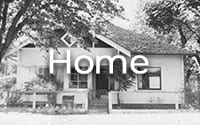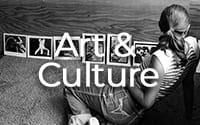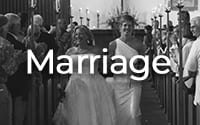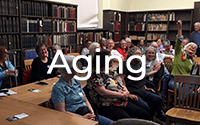Marriage
Marriage
Who knew it would happen in our lifetime and who knew it would mean so much? Lesbians in Eugene were torn about subscribing to an institution that they had avoided or disavowed. And yet, a desire for both rights and recognition propelled their dedicated interest in achieveing marriage equality.

“The idea of getting married was so far from my dreams that I never even considered it.”
– Marilyn Farwell –
HURRY UP AND WAIT
Throughout most of the 20th-century gay rights movement, lesbians and gay men did not aspire to legal marriage as either a political goal or a personal aspiration. Instead, they focused politically on “freedom from” needs: freedom from police harassment and brutality, housing and employment discrimination, gay bashing, criminalization of gay sex, psychiatric diagnosis and so on. This work, spearheaded by the homophile societies of the 1950s and 60s (The Daughters of Bilitis and the Mattachine Society), sought more legal protection, access, and understanding. The increasingly confrontational and countercultural politics expressed by the Compton Diner and Stonewall riots and the Gay Liberation Movement of the late 1960s-1980s celebrated gay pride and a gay/lesbian/trans culture that eschewed heterosexual conventions of marriage and nuclear families. Lesbian feminists viewed marriage as legally and culturally sexist, as one of the Eugene narrators puts it, an institution that for women means “chattle…and dishes.” For many lesbians (as for many women throughout history), their sexual and communal choices represented a conscious escape from the confines of heterosexual marriage. Legal exclusion from marriage allowed the increasingly visible queer culture to reject the perceived poverty of traditional family formations and to advocate for radical sexual politics, challenges to gender conformity, non-monogamy, and lesbian separatism.


The AIDS epidemic in the 1980s and 1990s further highlighted the failure of many “biological families” who rejected their gay relatives. In its place, LGBTQ people revealed the strength and compassion of their “chosen families” who nurtured one another without question. The epidemic also laid bare the terrible inequity of legal, economic, and social benefits given to heterosexual couples who could legally marry, but withheld from same-sex couples who could not. Denied the rights of marriage, LGBTQ people did not have automatic rights to visit and advocate for their partners in hospitals, to have their partners on their health insurance plans and apartment leases, or to protect their economic assets. While most queer political organizers preferred to ground those rights in universal health care and fair housing, taxation, and immigration policies, marriage equality became the most legible political strategy.
And yet the road to marriage equality was a bumpy one. Narrators of the Eugene Lesbian Oral History Project pursued many other options along the way to validate their relationships: non-legal ceremonies, employer and state domestic partnerships, civil unions, and marriage in various countries and other states as it became legal. The 1987 and 1993 Marches on Washington for Lesbian and Gay Rights hosted symbolic (but not legal) mass marriage ceremonies on the steps of the Internal Revenue Service for thousands of couples. In the queer community, controversy characterized the push for marriage equality: was same-sex marriage assimilationist or transformative? Would it dismantle straight culture or doom queer culture?
From 1993 to 2015, states either implemented constitutional amendments defining marriage as between one man and one woman or began to issue marriage licenses for same-sex couples. Alarmed by Hawai’i’s Supreme Court finding in 1993 that the denial of same-sex marriage was discriminatory, the Religious Right worked to influence the U.S. Congress to pass the Defense of Marriage Act in 1996. Defiantly, both San Francisco County in California and Multnomah County in Oregon began issuing marriage licenses for same-sex couples, only to have the states annul them soon thereafter. Many narrators comment on the pain of having their licenses and filing fees returned to them by mail. As one put it ruefully, “Now you’re married, now you’re not.” While many of the narrators hurried to Canada or Massachusetts or Washington to get married as those options opened, others chose to “Just wait” until they could get legally married in their home state. In Oregon that didn’t come until 2014, just a year before the U.S. Supreme Court ruled that same-sex couples could partake of the 1,138 Federal rights and responsibilities of legal marriage. Most of the lesbians interviewed had been together for 20-30 years before their relationships were legally acknowledged, celebrated, and protected.
GALLERY
FOR TEACHING AND RESEARCH
Ideas
Visit the Eugene Lesbian Oral History Project archive to read about Joanne and Ellie Fletcher’s and Sally Sheklow and Enid Lefton’s many weddings.

















